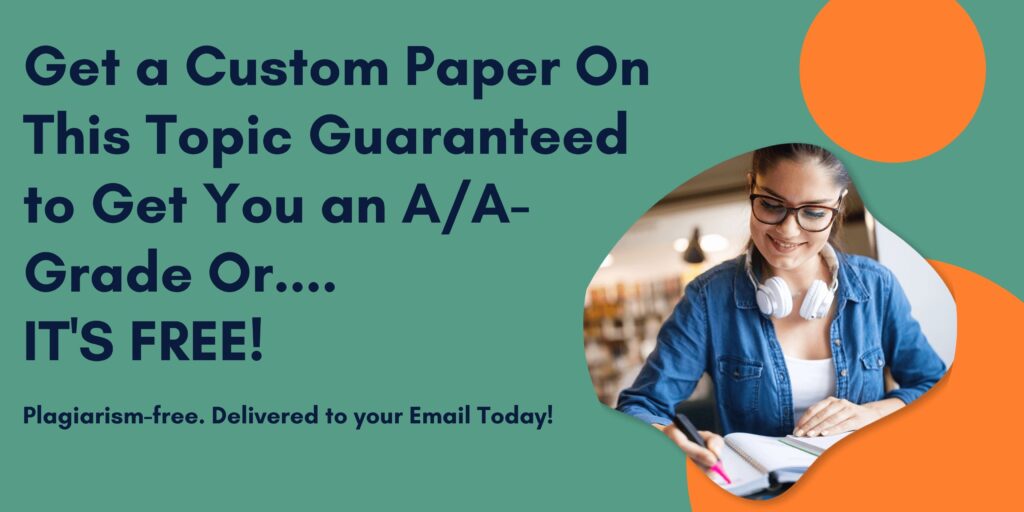NATS 1870A: UNDERSTANDING COLOUR (SU 2024)
MIDTERM EXAM: FORMAT AND EXPECTATIONS
When and Where:
• Saturday, July 6th, 9am-12pm (‘Toronto time’) (3 hours)
• In eClass, go to the new MIDTERM EXAM section at the top of the course home page. At the start of the exam, you will see these two items: ‘Midterm Exam – Articles and Instructions’ file, revealing the 3 new articles to be used for this exam.
‘Midterm Exam – Submission of Answers’ link, opening a TurnItIn assignment submission link for you to submit your typed responses file, within the exam time window listed above.
Make sure you have the necessary technology (computer with stable internet connection) available exactly when you need it for this exam. • Late penalty policy: any exams submitted after the indicated deadline will be deducted a late penalty of 1 mark (out of 30) for every 10 minutes past the deadline, within the first hour after the deadline; no further exams will be accepted after 1 hour past the original ending time.
Exam Format and Settings:
This exam is based on Lessons 2-12, with all connection points and questions to be made to concepts explicitly covered in these lessons.
You will be presented with 3 (three) different media science news articles to read, each with a suitable word count range (around 800-1,000 words approximately), from sources like https://scitechdaily.com/ and https://phys.org/, published outside of our research project’s period. • For each article, you will then complete a typed response (on your own device) containing 2 connection points and 1 multiple-choice question, as follows: 2 (two) connection points between the article and our lesson materials (lesson slides and/or readings, over single or multiple different lessons covered this term). Each connection point should: ▪ Have a clear title given for the connection point, including the general scientific concept being connected between the article and the lesson (eg: Colour sensitivity ranges of human vision), and a specific reference to the lesson materials (eg: Lesson 3 slides (#19, 21))
▪ Be written fully in your own words! Copying sentences, in part or in full, from the articles themselves and/or lesson materials constitutes plagiarism, as does copying/sharing answers between classmates; this in turn may result in deductions ranging in severity. Using other aides like Google Translator is highly discouraged, as it can lead to copied material being selected from the web, and resulting in plagiarized content submitted by the student. Instead, after reading each article and identifying the scientific concepts for your connections, try putting the articles away and writing your connection points completely on your own, with proper English grammar and writing style.
NATS 1870A: UNDERSTANDING COLOUR (SU 2024)
▪ Demonstrate meaningful insight into the scientific material presented in the article and covered in the lessons, by explaining clearly how your stated scientific concept in the connection point – as first explained in our lesson materials – is now also being investigated in the scientific research being reported in the assigned news article. Compare-and-contrast type analysis is a good technique to use here, by first comparing the similarities in the scientific concept (between the lesson materials and news article), and then contrasting any possible differences between them as well, such as new or unexpected or contradicting results discovered in the research compared to the previous knowledge on that topic (as covered in the lessons). Make sure there is adequate discussion of both the news article and textbook readings/lessons in each connection point.
▪ Note: if using video documentaries (for lessons 7 or 11 only) for ‘lesson material’ for your connection point, then you must specify the specific timing in the video itself where your concepts are explained. (For all other lessons, use only the lesson slides for references, and not the recorded lesson videos.)
▪ Be between 50-150 words long as a general guide. (Higher grades will be assigned for higher quality of connection points presented, and not simply for meeting the minimum word count.)
1 (one) multiple-choice question created based on the media article, following the same format as our short assignments (i.e. 4 possible answer options, with correct answer identified as well). Higher grades will be given to questions more conceptual (than just factual) in their nature.
Once you have completed all your responses, with 6 connection points and 3 multiple-choice questions created in total, you will then submit the Word file to the TurnItIn submission link, within the exam time period.
All students will be expected to maintain full academic integrity in the exam by composing their own original responses, which will in turn be reviewed for any possible plagiarism by the TurnItIn software (for example). Although all students will be reading and responding to the same articles, their responses to them should still nonetheless be individual and unique, just as they would be at an invigilated, paper-based exam on campus. Each student is also expected to complete this exam individually and by themselves. The Senate Policy on Academic Honesty is an affirmation and clarification for members of the University of the general obligation to maintain the highest standards of academic honesty. Any instances of plagiarism and/or other breaches of academic honesty policy may be subject to further investigation and possible consequences as outlined in this policy.
Policy on Generative AI: Students are not permitted to use generative artificial intelligence (AI) in this course. Submitting any work created through the use of generative AI tools will be considered a violation of York University’s Senate Policy on Academic Honesty. If you do not know whether an online resource or tool can be used in this course, please contact your instructor for guidance. For more information, please review AI Technology & Academic Integrity: Information for Students.
See Examples and Past Exam Articles on the Next Pages… NATS 1870A: UNDERSTANDING COLOUR (SU 2024)
Example of a Connection Point:
Article: Spectacular bird’s-eye view? Hummingbirds see diverse colors humans can only imagine
URL: https://www.sciencedaily.com/releases/2020/06/200615155114.htm
Connection Point: Colour sensitivity ranges of human vision; Lesson 3 slides (#19, 21)
Both the news article (first paragraph) and Lesson 3 slides (page 19) discuss the three types of main-colour (wavelength) cones in our eyes as the basis of typical human colour vision: red, blue, and green. In Lesson 3, slide 21, these three primary colour sensitivities are represented as the vertices of the ‘gamut’ of all colour ranges possible for us to perceive from their combinations. The range of spectral colours – all in the visible section of the EM spectrum – that human eyes are sensitive to are labelled with wavelengths on the outer perimeter of the CIE ‘gamut’. In contrast to our eyes, hummingbirds’ eyes have an extra (4th) cone sensitive to UV light, with much shorter wavelengths than our shortest-wavelength blue on the gamut. This in turn would significantly expand the hummingbirds’ ‘gamut of possible colours’ perceived compared to ours, creating a more diverse colour vision experience shared by many birds and other vertebrates.
Additional possible topics for the second connection point in this article (related to other sections in textbook as well):
Discuss the range of non-spectral colours in human versus hummingbird colour vision
Example of a Question Based on the Article:
Multiple-Choice Question (Conceptual Type):
If humans had a 4th cone sensitive to UV light like the hummingbirds, which of these colours perceived by us would NOT be non-spectral?
Purple
UV+orange
UV+blue
UV+red
Correct answer: c
Examples of Past Midterm-Exam Articles:
Article 1: Building a Better Bulb: New Prototype LED Lightbulb Emits Less of That Troublesome Blue Light (925 words) https://scitechdaily.com/building-a-better-bulb-new-prototype-led-lightbulb-emits-less-of-that-troublesome-blue-light/
Article 2: Optimal Information About the Invisible: Measuring Objects That You Can’t See (904 words) https://scitechdaily.com/optimal-information-about-the-invisible-measuring-objects-that-you-cant-see/
Article 3: “Surfing” Particles on Alfvén Waves: Physicists Solve a Mystery Surrounding Aurora Borealis (829 words) https://scitechdaily.com/surfing-particles-on-alfven-waves-physicists-solve-a-mystery-surrounding-aurora-borealis/
I WOULD POST THE READINGS IN THE FILE DOCUMENT
NATS 1870A: UNDERSTANDING COLOUR (SU 2024) MIDTERM EXAM: FORMAT AND EXPECTATION
Struggling With a Similar Paper? Get Reliable Help Now.
Delivered on time. Plagiarism-free. Good Grades.
What is this?
It’s a homework service designed by a team of 23 writers based in Carlsbad, CA with one specific goal – to help students just like you complete their assignments on time and get good grades!
Why do you do it?
Because getting a degree is hard these days! With many students being forced to juggle between demanding careers, family life and a rigorous academic schedule. Having a helping hand from time to time goes a long way in making sure you get to the finish line with your sanity intact!
How does it work?
You have an assignment you need help with. Instead of struggling on this alone, you give us your assignment instructions, we select a team of 2 writers to work on your paper, after it’s done we send it to you via email.
What kind of writer will work on my paper?
Our support team will assign your paper to a team of 2 writers with a background in your degree – For example, if you have a nursing paper we will select a team with a nursing background. The main writer will handle the research and writing part while the second writer will proof the paper for grammar, formatting & referencing mistakes if any.
Our team is comprised of native English speakers working exclusively from the United States.
Will the paper be original?
Yes! It will be just as if you wrote the paper yourself! Completely original, written from your scratch following your specific instructions.
Is it free?
No, it’s a paid service. You pay for someone to work on your assignment for you.
Is it legit? Can I trust you?
Completely legit, backed by an iron-clad money back guarantee. We’ve been doing this since 2007 – helping students like you get through college.
Will you deliver it on time?
Absolutely! We understand you have a really tight deadline and you need this delivered a few hours before your deadline so you can look at it before turning it in.
Can you get me a good grade? It’s my final project and I need a good grade.
Yes! We only pick projects where we are sure we’ll deliver good grades.
What do you need to get started on my paper?
* The full assignment instructions as they appear on your school account.
* If a Grading Rubric is present, make sure to attach it.
* Include any special announcements or emails you might have gotten from your Professor pertaining to this assignment.
* Any templates or additional files required to complete the assignment.
How do I place an order?
You can do so through our custom order page here or you can talk to our live chat team and they’ll guide you on how to do this.
How will I receive my paper?
We will send it to your email. Please make sure to provide us with your best email – we’ll be using this to communicate to you throughout the whole process.
Getting Your Paper Today is as Simple as ABC
No more missed deadlines! No more late points deductions!
You give us your assignments instructions via email or through our order page.
Our support team selects a qualified writing team of 2 writers for you.
In under 5 minutes after you place your order, research & writing begins.
Complete paper is delivered to your email before your deadline is up.
Want A Good Grade?
Get a professional writer who has worked on a similar assignment to do this paper for you


